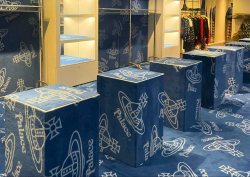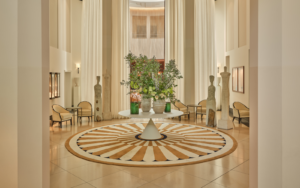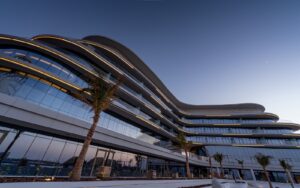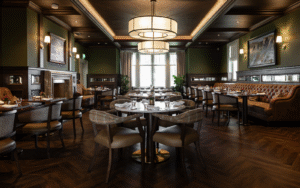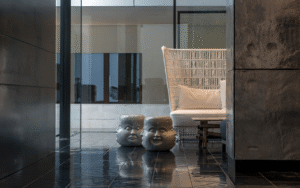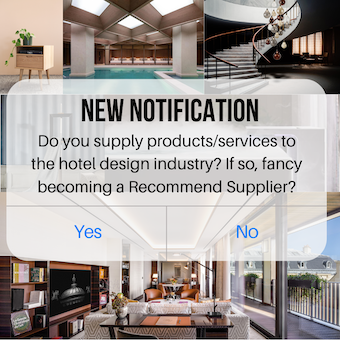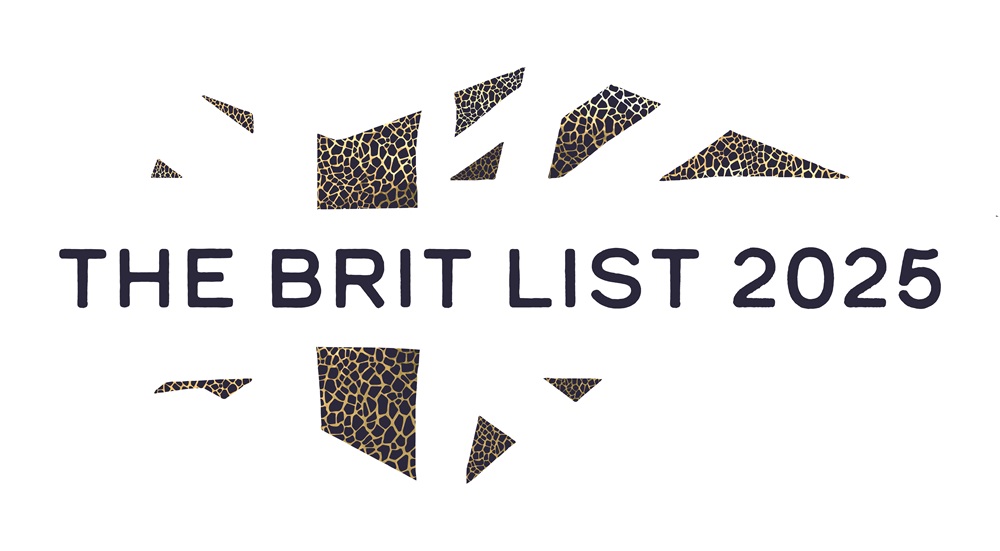Continuing to showcase its focus on sustainable innovations, at HIX 2024, hansgrohe brought together industry experts to discuss their approach to sustainability and to advocate for solutions to enable the sector to work better together…
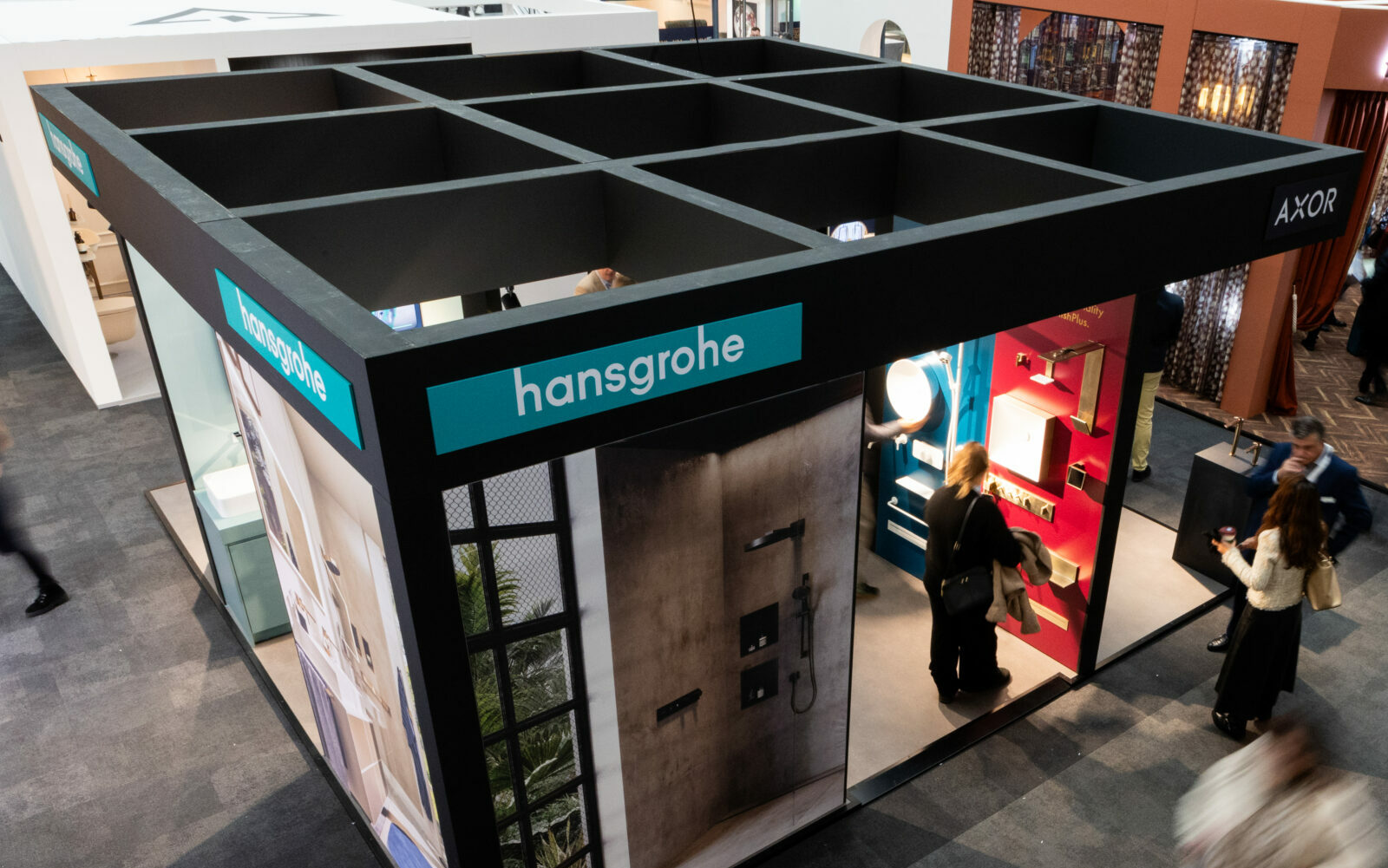
At HIX 2024, hansgrohe hosted a panel talk on value engineering in the hospitality sector, which explored how value engineering is navigated and applied throughout a project life cycle, as well as the big challenges that crop up.
Abbie Starling, Founder of Athena Projects, introduced the panel, which was made up of Rob Webber, Partner at Gardiner & Theobold, Brian Greathead, Director at Manalo & White Architects, and Martin Bretecher, Co-founder of Figurz.eu. The panellists were invited to take a deep dive into the challenges that come with big and small hospitality projects.

Image credit: hansgrohe
Budgeting the right way
From a contracting perspective, the practice of value engineering for projects continues to be debated. What’s more, the admission that bespoke value engineering schedules, using cheaper product choices, are prepared at tender stage by contractors, points to a disconnect between initial project aspiration and the reality of costed delivery.
A key talking point touched on by the panel related to the importance of better budget management. Unpredicted cost increases, shortage of labour and materials, delays, and supply chain issues can all impact a project’s final spend and how long it takes to complete.
Here, Martin Bretecher commented: “There are often small things that are missed, which can cost a lot. For example, supplying maintenance items, such as screwdrivers — whilst they may be inexpensive as individual items — collectively, for the size of the project, it can massively impact budget plans if they are forgotten about.
“Not factoring in such supplies could result in having to find an extra £10,000 in the budget, which is then is looked for elsewhere, such as in interior design,” Martin concluded.
Brian Greathead agreed, expanding on how, often, the budget that’s given doesn’t always match up to project ambitions. He said: “We have to try to get more for less — which, as you can understand, is hard to achieve.
“And often the client is told what they want to hear, as opposed to what they need to hear. In essence, the more realistic the outset budget is, the more chance of getting to the intended design delivery.”
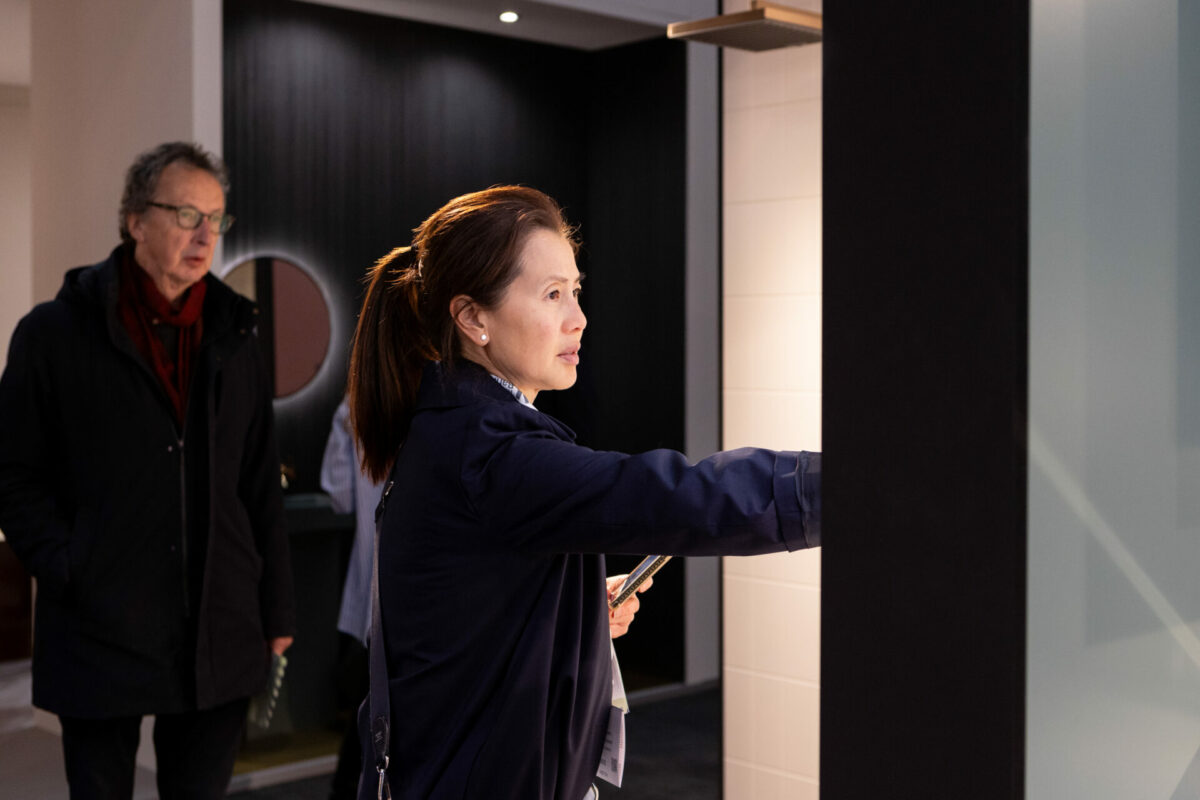
Image credit: hansgrohe
Panellists also added that this could be a challenge when clients aren’t prepared to share their budgets at the ideas stage, and touched on how better transparency throughout is needed. Even though this is starting to change, with a growing number of clients seeing the value in being more transparent about their budgets, there remains to be a culture of keeping discussions around financing siloed.
As Rob Webber explained: “Budget should be brought into the brief, which designers should also be a part of. To improve the value engineering process everyone, including the project manager, designer and architects, should sit down with the client and be part of the conversation around budget.”
Transparency emerged as the key to tackle this issue, with Abbie Starling sharing her thoughts on how vital it is to bring clients along with you on the journey. She also shared the importance of being honest throughout the process, regardless of how much clients may not want to hear certain things.
Aligning design process with value engineering process
The group then went on to discuss the common aim of value engineering: to help teams identify ways to save money without compromising quality or performance. They discussed how a lot of the time, getting cheaper furniture, fixtures and equipment (FF&E) was not always the solution.
Martin suggested that more consideration needs to be made when thinking about costs of FF&E, including future maintenance costs of big-ticket items, such as chandeliers. He said: “A lot of the time, the cheaper item eventually costs more than the expensive item,” explaining how taking the longevity of an item into consideration could, in fact, save the client more in the long run.
Brian also added to this, sharing how sometimes managing costs is about reinventing the design. He added: “I would encourage project teams to identify ways to change the design, rather than just lowering the quality of things used. A radical change is better than minimising the quality of things. The trick here is to ensure the core idea is really strong and bring everyone in the process together to discuss how this reasoning can help come to a better solution.”
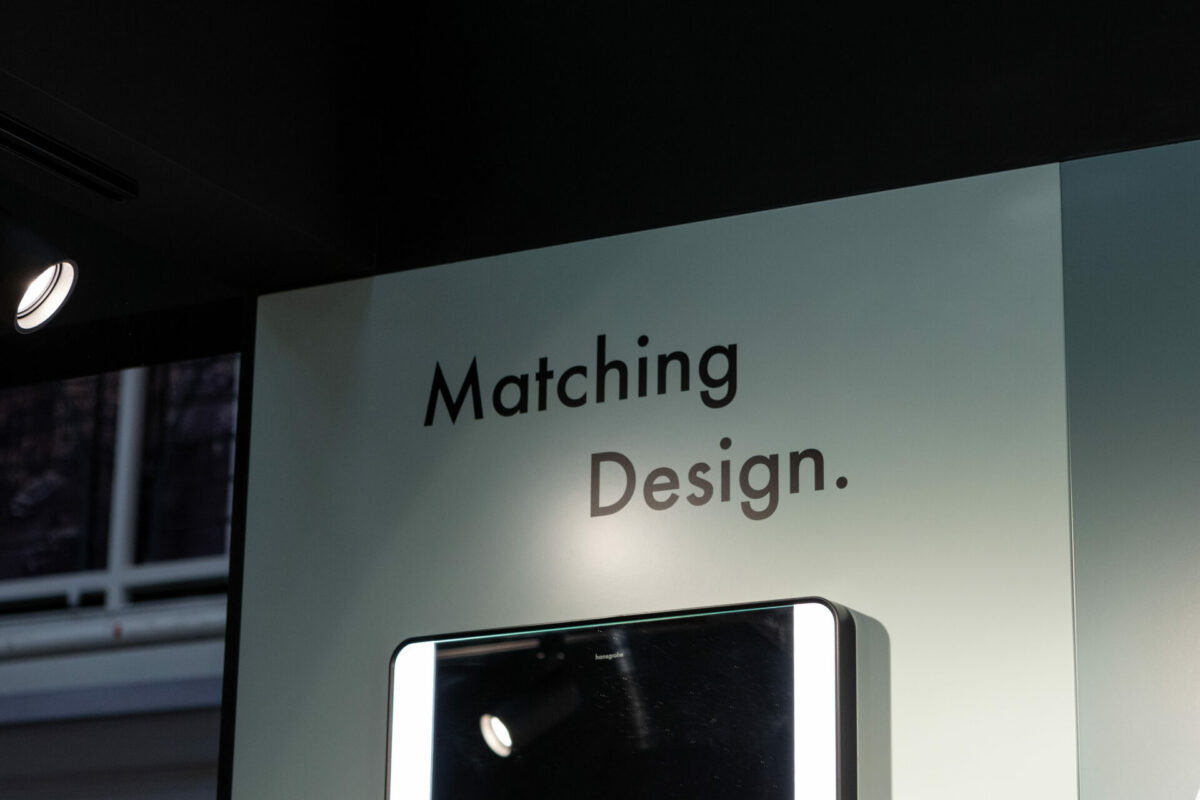
Image credit: hansgrohe
Making longevity a top consideration
Value engineering comes from making the most of budgets and bringing projects to life when there are limited resources available. However, this can potentially result in the cheapest project becoming more expensive overtime.
Martin commented: “It’s important to remember that each item is managed by various different people across the project. The designer identifies the item — for example a chandelier — the purchasing manager locates and buys the item, the construction engineer validates the weight and size, and the operator finds the lamps, and so on. This means there needs to be a clear line of communication and transparency throughout the process to make sure there are no hiccups.”
One suggestion to support a smoother process is to insert a cost check stage prior to the concept being shared with clients. This could save time, optimise resources, and even mitigate costs in the long run.
Trust and compliance
The panel also touched on ways to incentivise the team to reach better numbers, without compromising on the end result. Rob stated how there’s often no time for value engineering built within the programme. He said: “What happens is that the project begins with the contractor raring to go but they end up feeling frustrated as there are delays or an unclear route on how certain parts of the project will progress.
“Contractors need to work with the team, and they ideally need to be brought on board as early as possible for efficient market testing. More time also needs to be set out to work through a process, to ensure unexpected delays are kept to a minimum.”
Martin also touched on earlier onboarding for suppliers: “Building trust with suppliers is paramount and could potentially lead to lower costs if there’s a good relationship.”
The discussion also contemplated the changing regulations within the industry, including the Building Safety Act. The panel stressed that architects are responsible for a higher level of due diligence, with there being tighter restrictions and processes in place.
This means any changes to projects could result in delays, as they will need to go through a process with the architects to ensure they’re legally compliant.
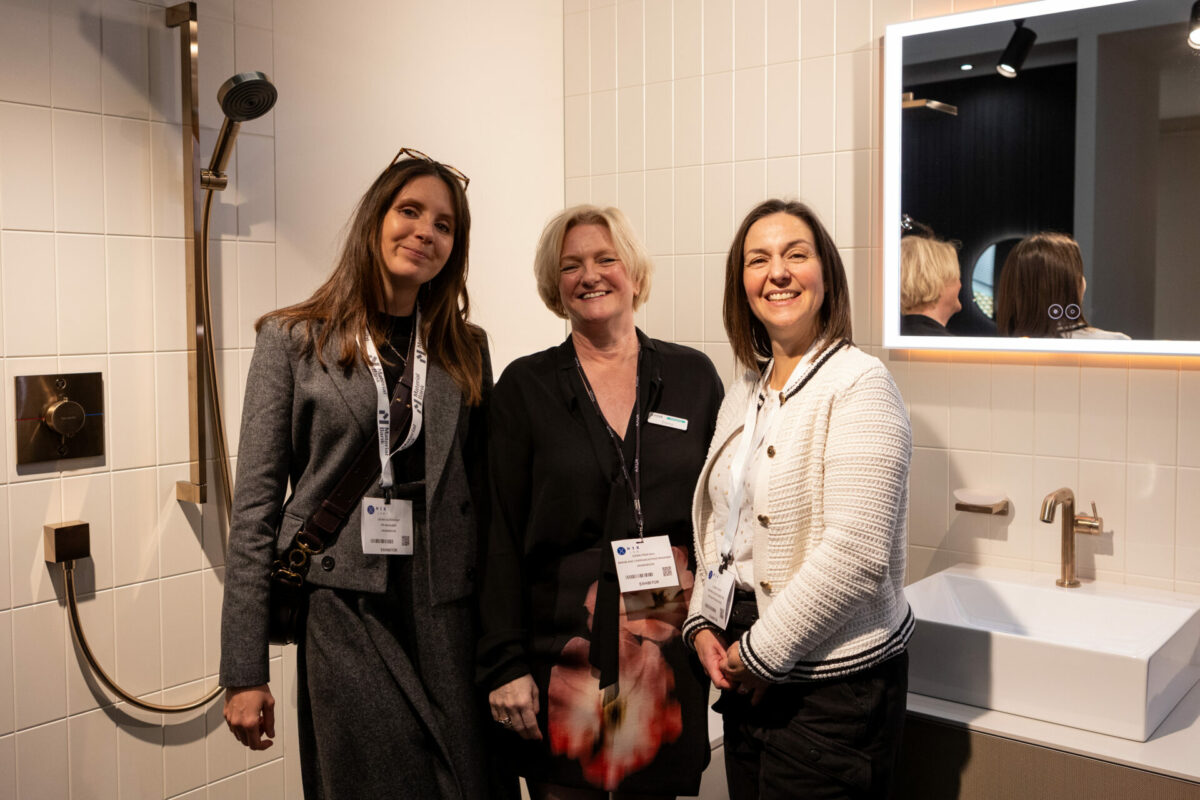
Image credit: hansgrohe
Supporting the hospitality design industry
In 2023, to help tackle some of the challenges the hotel design industry faces, hansgrohe released a white paper – Commercial Hotel Projects: Challenges and Opportunities for the Construction Supply Chain. This is designed to help deliver better, futureproofed outcomes for all, from architects to hotel operators.
Emma Freeman, Brand and Communications Manager for hansgrohe UK, said: “HIX is an important event for the hospitality interiors sector. We aim to bring together key stakeholders to share their views and opinions on the topics that can push the industry further forward.
“Facilitating discussions like these at HIX and other industry events allow us to understand our customer needs better and work together with stakeholders to deliver solutions,” she continued.
“We have been facilitating discussions like this since 2023, and as a result, released a white paper that looks at the challenges and opportunities for commercial hotel projects and design. The aim was to start conversations in the hotel design industry, to help encourage more cross industry collaboration and develop a mutual understanding of differing perspectives. I’m really pleased that we were able to take hone in on a key topic within the whitepaper – value engineering – and bring together this panel of experts to start moving towards possible solutions.”
hansgrohe is one of our Recommended Suppliers and regularly features in our Supplier News section of the website. If you are interested in becoming one of our Recommended Suppliers, please email Katy Phillips.
Main image credit: hansgrohe




